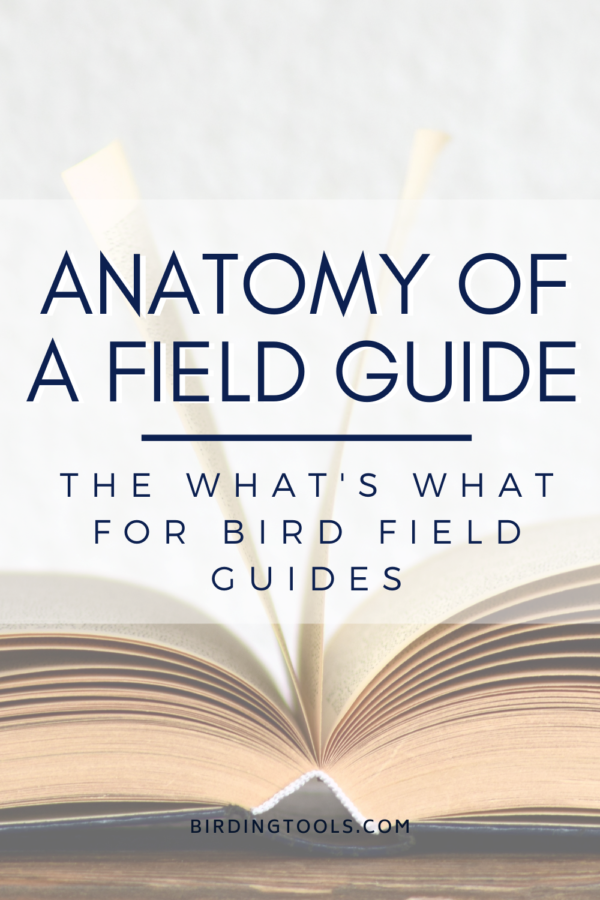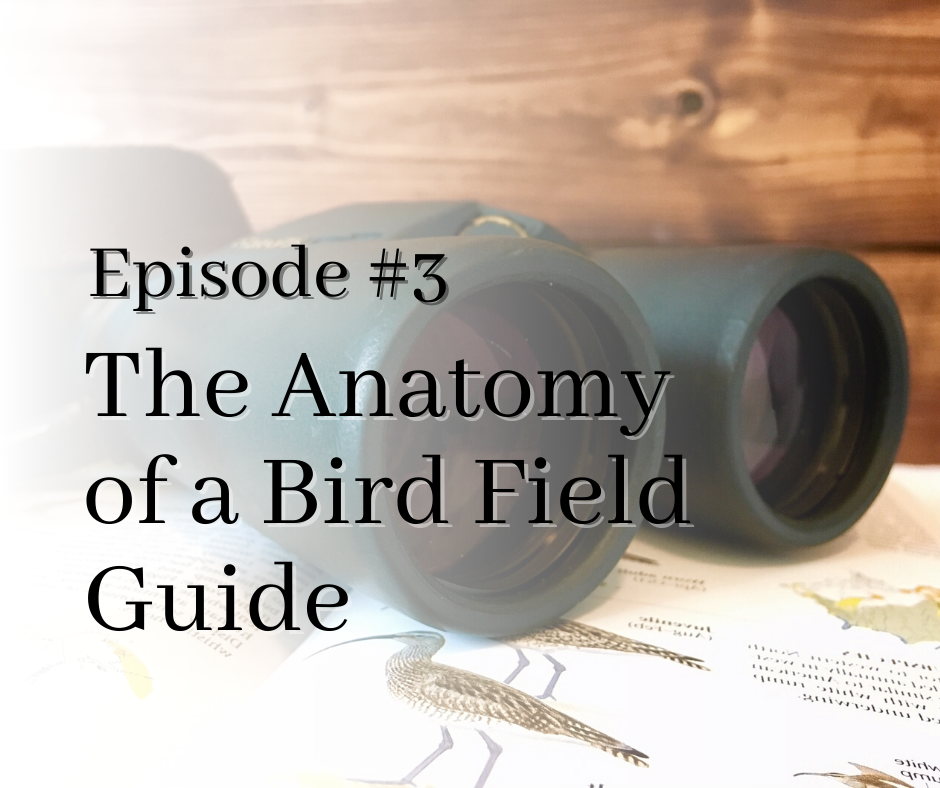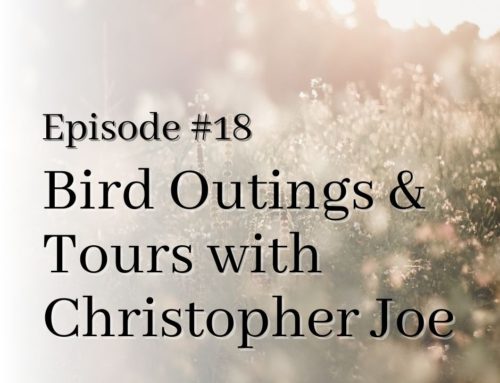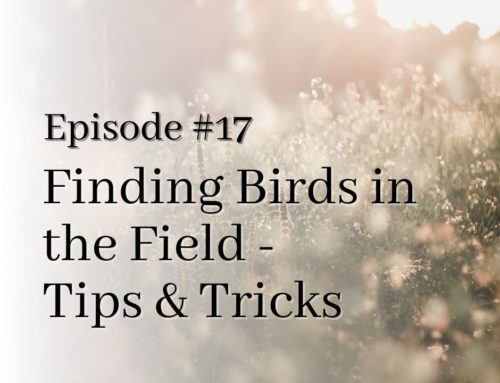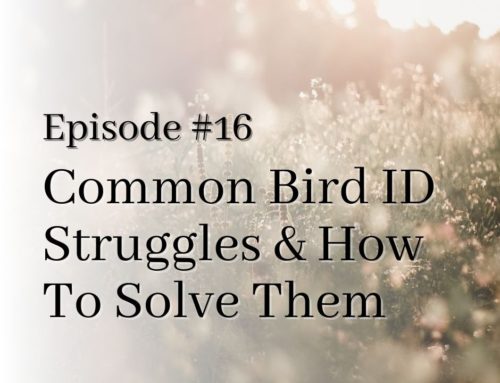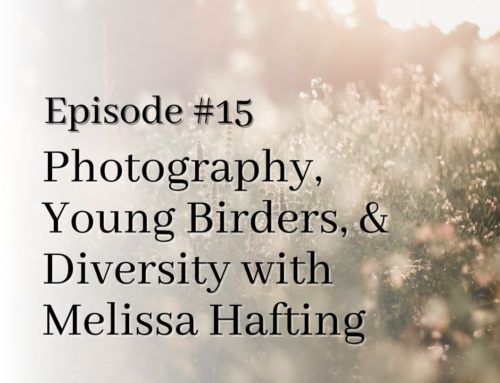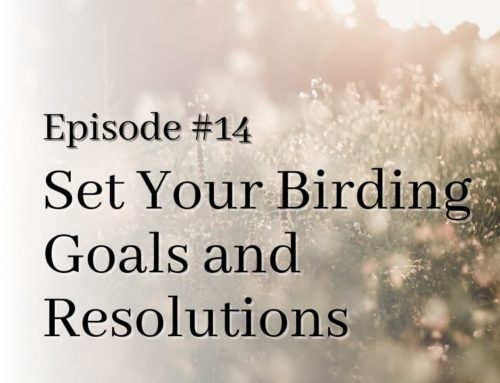Welcome to Episode 3 of the Birding Tools Podcast.
If you’re just starting to look for your first bird field guide, or if you want to better understand how your guide is organized, this episode is for you!
In this episode, I’ll be getting into the anatomy of your bird field guide, including what makes a great field guide and how it’s organized.
Getting comfortable with the layout and contents of your field guide will reduce the overwhelm you might feel every time you pick up that book.
And guess what? Birding isn’t meant to feel overwhelming! Let’s dive in together.
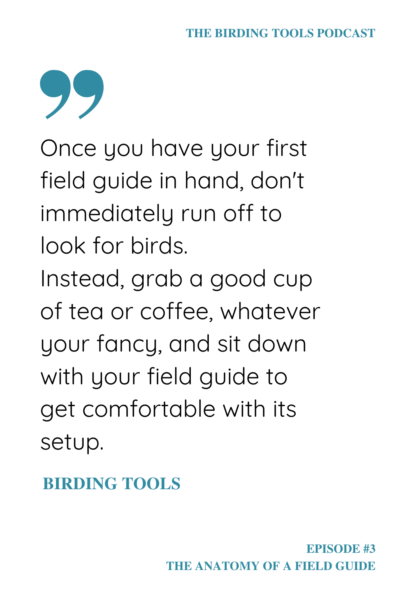
Here’s how the episode goes
[0:53] I’ve created a Field Guide Map that shows my recommendations for field guides for various countries or regions around the world. Take note that I’ll be continuously adding to this over the next few weeks! Have a suggestion? Write to me to let me know!
[1:30] First, what’s a field guide? These small but incredibly useful books are jam-packed with information about all the birds you’re likely to see in the region for which it’s written. Importantly, your field guide is the number one thing you should bring with you when you go out birding!
[2:50] There are two things to keep in mind about the field guide you select for yourself as a first-time birder. First, choose a guide for the region you’re birdwatching in so it covers the locations where you’ll jet off to see birds. Next, consider buying a guide that has drawings instead of photographs as your first guide.
[4:30] Before you head outside with your newly acquired field guide, remember to sit and study it for a bit. Get comfortable somewhere with your favorite beverage and get acquainted with your guide.
[5:30] Start by reading the introduction to your field guide, with a special focus on the anatomy of birds.
[7:57] Field guides are ordered taxonomically, or by their evolutionary order. Better understanding these bird groups, or families, will help make you a better birder and aid in your bird ID skills!
[9:30] Given your field guide is ordered taxonomically, similar species are grouped together near each other. The first half of your guide has non-passerines, or non-perching birds such as water birds and larger land birds. Contrastly, the second half of your guide has passerine birds, or perching birds, including thrushes, finches, sparrows, and warblers.
[10:55] Each species found in the designated region will have a short paragraph listing out its five key identification characteristics. In addition, guides show an image of the bird in different plumages and the overall range map where the bird is found.
[12:33] Having both a phone app and a physical book is a great way to keep you covered no matter where you are. No matter, I don’t recommend replacing a phone app with your field guide book!
You can also read more about this item and others to start birding on our Get Started page!
Subscribe & Review Wherever You Get Your Podcasts
Are you subscribed to my podcast? If you’re not, I want to encourage you to do that today. I don’t want you to miss an episode! Subscribe wherever you listen to your podcasts.
Now if you’re feeling extra loving, I would be really grateful if you left me a review over on iTunes, too. Those reviews help other people find my podcast and they’re also fun for me to go in and read. Thank you!
Links Mentioned in this Podcast
Lots of great beginner’s tools and resources are mentioned in this episode. Since we are based in North America, our focus tends to be on North American birds and resources.
However, if you need a hand finding the best resources for your country or region, please reach out so we can help you start birding on the right foot.
- Bird Field Guide Map
- Sibley Guide to Birds of North America (affiliate link)
- Crossly Guide to Bird ID for Raptors (affiliate link)
- Five Keys to Bird Identification Free Downloadable Guide
- Merlin Bird ID Applicaton
- Cross-body sachel (affiliate link)
- Birding vest (affiliate link)
- Birding Tools Facebook Page
Other Ways to Enjoy this Post
We so appreciate you listening to the Birding Tools Podcast! Please see the links below for other ways to enjoy this material.
